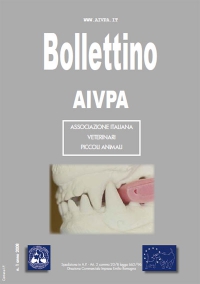Il dolore negli animali: perché è importante trattarlo
Patogenesi e conseguenze cliniche del dolore patologico - Parte 2
Authors
Della Rocca G., Di Salvo A.
Dipartimento di Patologia, Diagnostica e Clinica Veterinaria, Facoltà di Medicina Veterinaria, Università degli Studi di Perugia
Summary
Acute pain and associated reflex responses elicited by noxious stimulation are protective for short term survival of the organism. However, persistent pain may be deleterious to the organism because abnormal reactions may occur if pain is not relieved adequately.
Left uncorrected the consequences of pain and distress may extend well beyond unnecessary suffering. Excessive activation of the neuroendocrine stress response can promote catabolism and negative nitrogen balance, weight loss, and extra demands on cardiopulmonary function. Pain in the thorax or anterior abdomen may interfere with ventilation. Distressing pain will prevent many patients from eating and replenishing their energy stores. Pain may also interfere with the ability to lie comfortably, robbing the patient of much-needed sleep and causing behavioral responses that include restlessness, forced position changes, or self-mutilation, employing energy that could be better used for recovery. On the contrary, immobility of a single limb or the whole body due to a severe pain, sets the stage for tissue edema and venous thrombosis, urine retention and constipation. Several recent reviews have compiled evidence that pain and the attending stress response contributes to immune dysfunction, thrombosis or excess hemorrhage, pneumonia and other infections, impaired respiration, and other complications.
Therefore, pain has not to be considered only as an “unpleasant sensory and emotional experience” to treat for ethical reasons, but its treatment/prevention becomes imperative in the aim to aid healing, so becoming a key-objective in the veterinary profession.
Keywords
persistent pain, stress, clinical consequences


